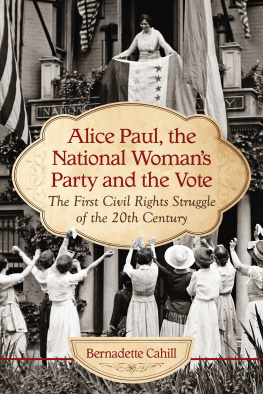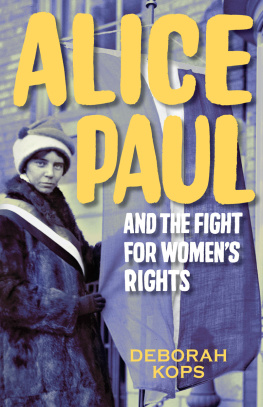Thank you for downloading this Simon & Schuster ebook.
Get a FREE ebook when you join our mailing list. Plus, get updates on new releases, deals, recommended reads, and more from Simon & Schuster. Click below to sign up and see terms and conditions.
CLICK HERE TO SIGN UP
Already a subscriber? Provide your email again so we can register this ebook and send you more of what you like to read. You will continue to receive exclusive offers in your inbox.
We hope you enjoyed reading this Simon & Schuster ebook.
Get a FREE ebook when you join our mailing list. Plus, get updates on new releases, deals, recommended reads, and more from Simon & Schuster. Click below to sign up and see terms and conditions.
CLICK HERE TO SIGN UP
Already a subscriber? Provide your email again so we can register this ebook and send you more of what you like to read. You will continue to receive exclusive offers in your inbox.
ALSO BY TINA CASSIDY
Birth: The Surprising History of How We Are Born
Jackie After O: One Remarkable Year When Jacqueline Kennedy Onassis Defied Expectations and Rediscovered Her Dreams

An Imprint of Simon & Schuster, Inc.
1230 Avenue of the Americas
New York, NY 10020
www.SimonandSchuster.com
Copyright 2019 by Tina Cassidy
All rights reserved, including the right to reproduce this book or portions thereof in any form whatsoever. For information, address Atria Books Subsidiary Rights Department, 1230 Avenue of the Americas, New York, NY 10020.
First 37 INK/Atria Books hardcover edition March 2019
 and colophon are trademarks of Simon & Schuster, Inc.
and colophon are trademarks of Simon & Schuster, Inc.
For information about special discounts for bulk purchases, please contact Simon & Schuster Special Sales at 1-866-506-1949 or .
The Simon & Schuster Speakers Bureau can bring authors to your live event. For more information, or to book an event, contact the Simon & Schuster Speakers Bureau at 1-866-248-3049 or visit our website at www.simonspeakers.com.
Interior design by Kyoko Watanabe
Jacket design by Donna Cheng
Jacket photographs: (Woodrow Wilson) Historical Images Archive / Alamy Stock Photo; (Alice Paul) Historic Collection / Alamy Stock Photo
Author photograph Gulnara Niaz
Library of Congress Cataloging-in-Publication Data has been applied for.
ISBN 978-1-5011-7776-7
ISBN 978-1-5011-7778-1 (ebook)
For my mother, Gloria Cassidy
If there is no struggle, there is no progress. Those who profess to favor freedom, and yet depreciate agitation, are men who want crops without plowing up the ground. They want rain without thunder and lightning. They want the ocean without the awful roar of its many waters. This struggle may be a moral one; or it may be a physical one; or it may be both moral and physical; but it must be a struggle. Power concedes nothing without a demand. It never did and it never will.
Frederick Douglass
Preface
In the summer of 2016, at the height of the presidential election, I was vacationing with my family and using the quiet early mornings to write. As I watched the sunrise and sipped my coffee, I couldnt resist sneaking a peek at the news. For weeks, the headlines had been shocking: hacked campaign emails; growing angst over economic, racial, and gender inequality; animosity toward immigrants; and the rise of new protest movements, including Black Lives Matter. Our democracy seemed to be challenged and provoked, functioning and fracturing all at once. After digesting several disheartening articles, I scanned the trending hashtags on Twitter. There, I stumbled upon #WomensEqualityDay, commemorating the adoption of the 19th Amendment on August 26, 1920, which gave all American women the right to vote.
I was surprised to be freshly discovering Womens Equality Day, created in 1973 by New York congresswoman Bella Abzug, who famously said, This womans place is in the Housethe House of Representatives. I realized, to my chagrin, that my knowledge of the suffrage movement trailed off somewhere around Susan B. Anthonys death in 1906. I had never heard the details of how the 19th Amendment came to pass, but the rough outlines of the story piqued my interest. There was a clear protagonist: a quirky young Quaker from New Jersey named Alice Paul, who had the vision, strategy, persistence, and personal dedication to demand nothing short of equal suffrage. And there was a clear foil: a moralistic president, Woodrow Wilson, who claimed to be a Progressive Democrat but offered only regression on gender and racial issues.
While there are several biographies of Paul and dozens of Wilson, I found that these books typically posed the pair on parallel trackseach figure focused on their own goalsand never on the obvious collision course for which they were destined. As we approach the centennial of the adoption of the 19th Amendment, its imperative that more of us know who Paul was and what she was able to accomplish in the face of relentless adversity. Equally, it is paramount that we consider Wilson from his many angles, flattering and unflattering alike.
The mystery of why Paul was forgotten while Wilson was perpetually deemed a hero occupied my thoughts as I dug through layers upon layers of information: historical newsprint and photographs, presidential papers, personal and professional correspondence, and physical artifacts. I sat in Pauls childhood bedroom, went to the White House and the Capitol Building, and walked the paths of history in Washington.
What surprised me most about my findings was how much I seemed to be looking not at the past, but at our present. The issues at the heart of American democracy remain the same today as they did a century ago. We fight the enemy abroad and battle each other at home. We hold sacred ideals but struggle to meet them ourselves. We forget that progress can be slow and sometimes indirect. But most of all, we fail to remember that it takes just one personhowever imperfectwho is utterly committed to change, to make it happen.
WASHINGTON, D.C., FEBRUARY 24, 2018
CHAPTER ONE
A Quaker from New Jersey

Alice Paul. Published in 1918.
N ovember 20, 1907. Birmingham, England. Alice Paul finished dinner with classmates at Woodbrooke, an imposing limestone Georgian estate set in the countryside at almost exactly the center of England. Quakers, like Paul, traveled here from around the world to study social justice and other progressive pursuits. As the servants began clearing the long dining table, Paul excused herself and hastened upstairs to her corner rooma shared space with two large windows and a fireplace as its only source of heatto prepare for the night.
The fur coat she had begged her mother to ship from the closet in the family farmhouse in Moorestown, New Jersey, in early October had not yet arrived. A perceived extravagance, the fur was a practical staple for the daughter of William Paul, who was a wealthy banker, but contrasted starkly with Pauls student wardrobe, which reflected her necessary thrift as well as a lack of focus on fashion. Her plain clothes were so threadbare that she would fashion a ragged silk dress into a top, as she had just done, rather than throw it away. She bundled up as warmly as she could and did not fuss with jewelry or makeup on her deep-set blue eyes. She grabbed her ticket for the event and walked out into the dark and damp.















 and colophon are trademarks of Simon & Schuster, Inc.
and colophon are trademarks of Simon & Schuster, Inc.